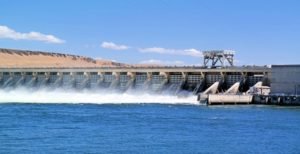Image source: b-easy.com
Manufactured sand which is commonly referred to as m-sand is made from crushing granite stone. It is an alternative to river sand and is used for concrete construction. Demand for good quality and has been on the rise and deficiency of river sand has led to looking for alternative sources of sand.
The use of manufactured sand has been increasing over the years and is readily available. M-sand can be crushed from the nearby location saving you on transportation costs. Let’s look at the pros and cons of using m-sand.
Pros:
1. No organic compound: M-Sand is pure, with no organic or soluble compounds that affect cement properties. It ensures the required sand texture is maintained for great concrete.
2. Increased quality: Manufactured sand doesn’t have impurities like clay, dust, and silt coating which increase water requirements when mixing the sand with cement. M-sand does not affect the bond between the aggregate and the cement paste.
3. Availability. M-sand is available throughout the year compared to river sand which is seasonal. The sand has the same characteristics and PH level as the river sand.
4. Sand properties: The advanced technology used to crush the granite (hard rock) ensures all the right sand properties are obtained.
5. The high strength of concrete: Manufactured sand has great properties, shape, texture, and consistency which makes it the best sand for construction.
6. Durable: Since the sand is made from quality granite, it has both chemical and physical properties for a great concrete structure. The structures can withstand extreme environmental conditions making the sand more durable.
7. Less disruptive to the environment: M-sand uses natural coarse aggregate to form making it eco-friendly with less damage to the environment compared to mining at river beds.
8. Cost-effective: You can obtain m-sand at nearby area saving on the cost of transportation and also ensuring there is a constant supply of sand. M-sand offers a competitive market price compared to the cost of river sand which is seasonal and keeps on fluctuating.
9. Fewer construction defects: Construction defects like honeycombing, bleeding, and voids are reduced when you use m-sand since it provides excellent fineness.
10. Grading zone: Modern machines are used in producing m-sand to ensure the right grading zone is produced.
Cons:
1. Large portions of micro fines: M-sand has a large amount of micro-fine content compared to natural sand due to the sand production process. This affects the strength of building concrete.
2. The technology used: Use of modern and more advanced equipment is needed in order to produce quality sand. This adds to the cost of production.
3. Workability issues: M-sand may have a coarser and angular texture compared to natural sand which is smooth. This makes you use more water and cement to achieve the required workability. The water required can also be compensated with the cement.
4. Inadequate crusher: Some parts of the country may not have adequate crushers or the granites are unavailable leading to the high cost of M-sand than that of river sand.
5. Takes time to produce: The manufacturing of sand takes quite some time. There is crushing, screening, and sometimes washing of the produced compound. The m-sand can also be separated into concrete fractions thus taking some time.
6. Adulteration: M-sand has less probability of adulteration compared to river sand which has a high probability of adulteration due to filtered sand with high amounts of silt.
7. Moisture content: M-sand moisture is only available to the water-washed m-sand content. In river sand, the moisture is trapped between the particles.



